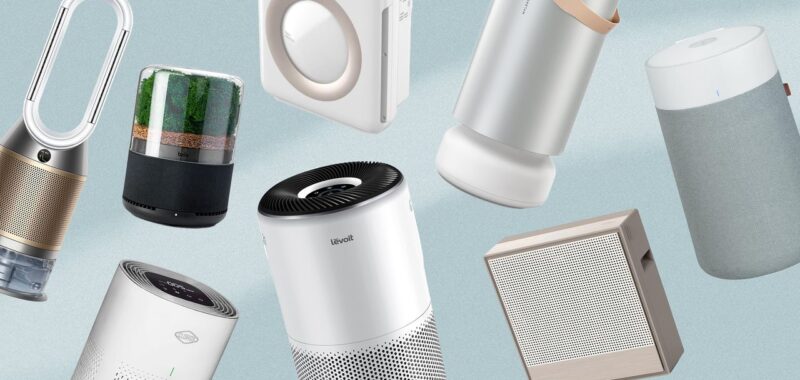Area coverage: Shark’s 3-in-1 unit is great for medium-to-large rooms, as it promises a purifying capacity of up to 500 square feet. I keep the system in my kitchen, which has an open floor plan that connects to the living room.
Filter replacements: The air purification system uses a Nanoseal HEPA filter with Microban, which costs $69.99 on Shark’s website to replace. The company recommends changing the filter every six months for the best results, and doing so is super simple—just open the back of the base, snap the new piece in place, then reset the filter life on the remote by holding down the air icon for a few seconds.
My experience: Setting up the system took only a few minutes thanks to the brand’s straightforward directions that are strategically placed on the unit itself. The air purifier comes with a Nanoseal HEPA filter with Microban, which traps 99.98% of large, small, and micro-size particles. Should you be the type of person who gets great pleasure out of cleaning, you might also enjoy the unit’s Clean Sense IQ monitor, which measures particle sizes (of PM1, PM2.5, and PM10) in real time.
There are several features I found to be worthwhile with the air purifier. For starters, it’s so quiet you might even forget it’s in your space—a huge benefit for a room that has to serve multiple functions, from at-home office to entertaining hub. I also like that the system comes with a remote control, so I can adjust the settings or swap functions from anywhere in the room.
Overall, the system’s intuitive design has been a breeze to use, and I’m happy with its performance in my home. I also appreciate that I now have a greater understanding of my space: The air purifier’s visual tracking of the air quality in the room allows me to be more aware of my surroundings, alleviating any concerns of airborne allergens.
What I would change: My only critique is a visual one: Because most of the walls in my apartment are white, I wish I would have gotten the white version so it would blend in with my space more. My mistake!
The bottom line: At $400, the unit is on the mid-to-high range pricing, but I found it to be worth it for the added benefits (and convenient consolidation!) of a heater and fan.
How we tested the best air purifiers
Our editors and writers live with their air purifiers and test them for a matter of weeks in order to gauge the full effects of each device. When selecting products, we took into account factors such as size, noise (ranging from whisper-quiet decibels of 6dB up to 60dB), coverage range, design, and price (including long-term costs of replacing filters). We also inquired within our testing pool about their current environments and how they hoped an air purifier would improve their home life. Several of our reviewers live with pets, have asthma or allergies, or were hoping the devices would keep areas like the kitchen and bedroom fume-free.
How we chose the best air purifiers
To come to our final list, we focused on finds that feature HEPA filters. We dive more into these filters below, but to briefly explain, they trap small particles like dust, mold, and pollen through a maze-like design. We also removed air purifiers we featured previously in this story that had middling reviews compared to others on the list, or were just outclassed by newer, better looking options in this guide.
How to check your air quality
There are three primary ways to check your air quality. If you want to go the free route, you can use your phone’s built-in weather app to check the AQI (Air Quality Index) of your location. It won’t be exact, especially if your windows are closed, but it’s an okay estimate. For a more specific air quality reading, you can purchase an air quality monitor (we found a bunch on Amazon starting from $36). Otherwise, if you have an air purifier already, there’s a good chance it has a screen or connected app that will tell you the CADR rating (Clean Air Delivery Rate) of your space.
How does wildfire smoke impact indoor air quality?
According to the US Environmental Protective Agency, a wildfire and the smoke and ash it emits can cause health risks, even if you remain indoors. Aside from smoke gases, the biggest health risk stems from the smoke’s fine particles. These can get in the eyes and respiratory system and cause issues like burning eyes, runny nose, and bronchitis. For those with preexisting conditions, the fine particles might cause chronic heart and lung disease flare-ups.

